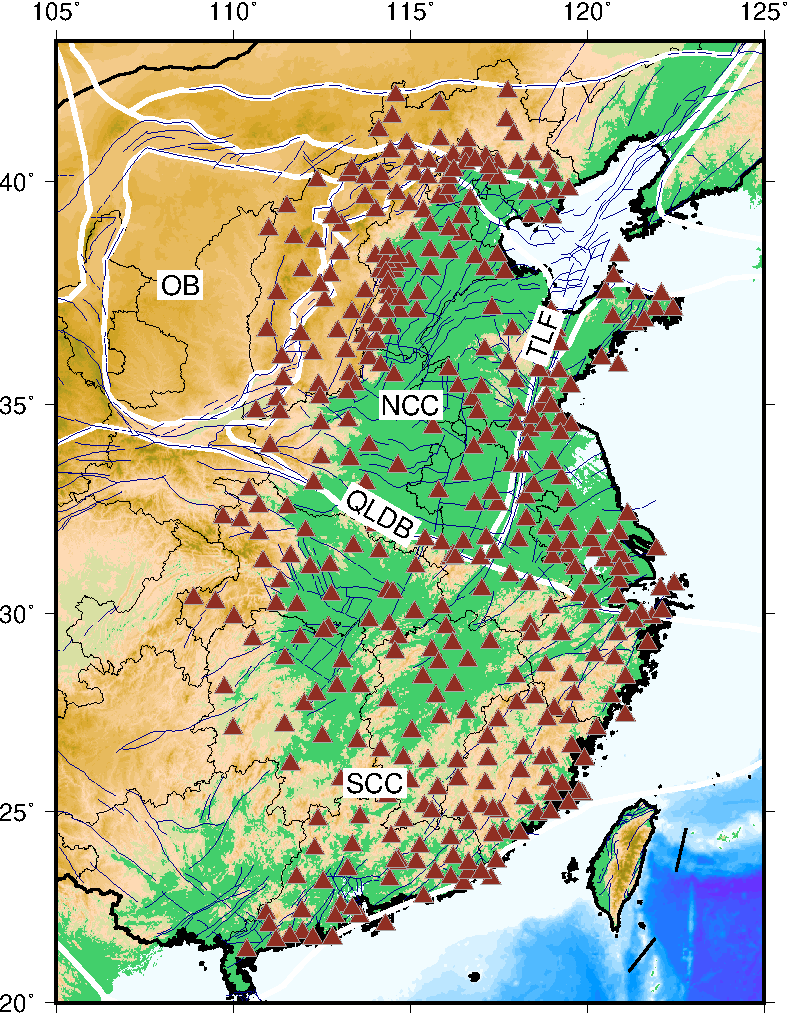Study of East China Cratons with Receiver Functions
Forschungsstipendium, CSC - China Scholarship Council
The eastern part of mainland China comprises different tectonic units, including two major cratons, the North China Craton (NCC) and the South China Craton (SCC). The two cratons have formed and consolidated in the Paleoproterozoic and collided in the Triassic along the Qinling-Dabie Orogenic Belt (QLDB). However, the ancient cratonic keels have been destroyed in the Mesozoic and the depleted cratonic lithospheric root has since been removed, leaving a thin lithosphere with a thickness of less than 90 km. The extensive Late Mesozoic lithospheric collision and extension in the eastern NCC may be the main reasons for the regional crustal and lithospheric thinning. The thinning in the central and western NCC (the Ordos Block, OB) is uneven and insignificant, and probably mainly occurred in the Cenozoic. The entire NCC is traversed by a large, 2400-km-long, nearly NS-oriented fault zone, the Tanlu Fault zone (TLF). The crust is about 30 km thick in the eastern NCC and is thicker than 40 km in the central and western NCC. Moho depth variations across the TLF suggest that the fault zone cuts through the Moho surface, which provides a channel for the intrusion of mantle-derived magma. With the extension of the China National Seismic Network, more data become available to study the lithospheric structures in more details and to infer the deep dynamic processes in East China. This study uses data from 359 broadband seismic stations, operated in 2020-2022, for a receiver function analysis in order to map the crustal thickness and to image the crustal structure in the study area.




